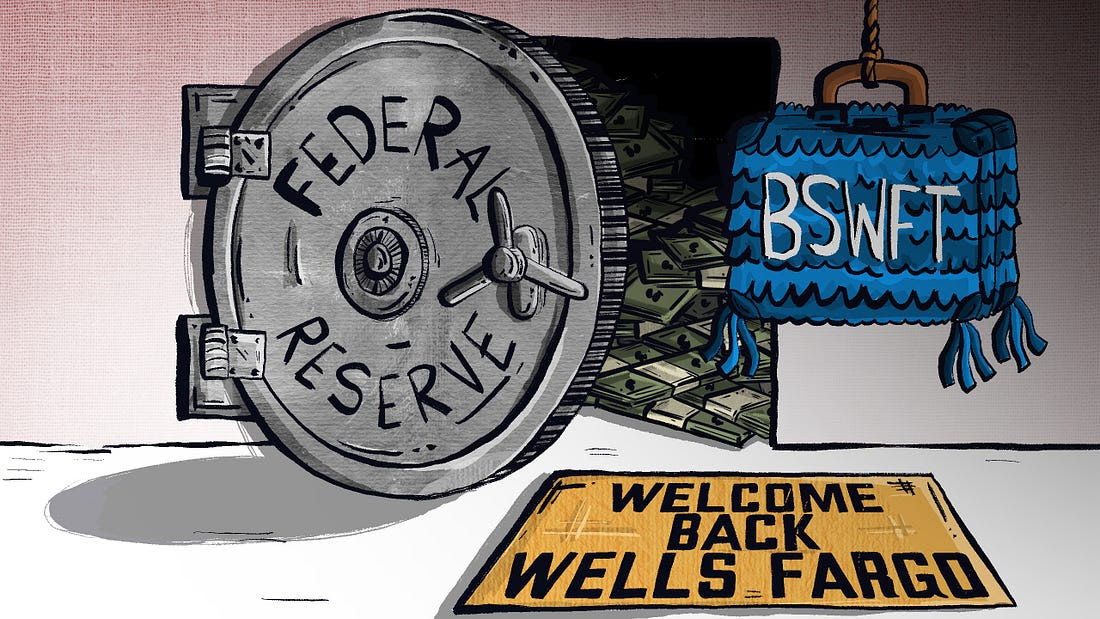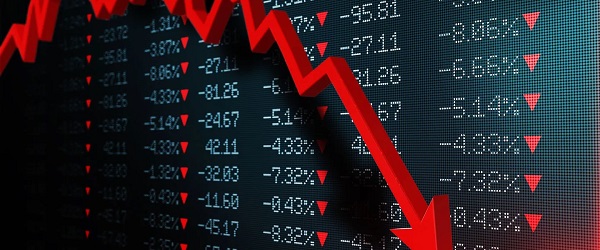Business
ESG will impose considerable harm on Canadian workers, doesn’t reflect the reality of how markets actually work

From the Fraser Institute
By Steven Globerman, Jack Mintz, and Bryce Tingle
The ESG movement—which calls for public companies and investors in public companies to identify and voluntarily implement environmental, social, and governance initiatives—will cause substantial harm to the economy and
workers, finds two new essays by the Fraser Institute, an independent, non-partisan Canadian public policy think-tank.
“Investor support for ESG is starting to wane, which isn’t surprising as the considerable harms ESG mandates pose come to light,” said Steven Globerman, resident scholar at the Fraser Institute and author of It’s Time to Move on from ESG.
The essay summarizes the arguments against imposing top-down ESG mandates. In particular, evidence shows that (1) ESG-branded investment funds do not perform better than conventional investment funds, (2) companies that proclaim to pursue ESG-related activities are not more profitable than companies that do not, and (3) mandating ESG-related corporate disclosures imposes additional costs on public companies and diverts resources away from productivity-enhancing investments, harming workers.
A separate new essay in the Institute’s series on ESG, Putting Economics Back into ESG written by Jack Mintz and Bryce Tingle of the University of Calgary, highlights how the current concept of ESG mandates being pursued in Canada are incompatible with basic economic theory and fail to understand how markets actually work. As a result, ESG mandates will (1) discourage new businesses from locating in Canada, (2) investors will be reluctant to invest in Canada, (3) Canadian companies will be less competitive than their international peers, (4) capital will leave Canada for jurisdictions without restrictive ESG mandates, and (5) economic growth will slow and workers will suffer as a result.
But these harms can be minimized if the definition of what constitutes ESG is expanded, securities commissions are not tasked with regulating ESG, but instead focus on ensuring market integrity, and if governments prosecute fraud in ESG branded funds, and likewise, governments impose liability for the use of ESG ratings, which have been found to be invalid and unreliable.
Crucially, both essays conclude that public policy objectives, such as those addressed by ESG initiatives, should be decided by and acted on by democratically elected governments, not private sector actors.
“There is no reason to believe that managers and business executives enjoy any comparative advantage in identifying and implementing broad environmental and social policies compared to politicians and regulators,” said Globerman.
“The evidence is clear—the private sector best serves the interests of society when it focuses on maximizing shareholder wealth within the confines of the established laws, not complying with top-down imposed ESG mandates that will harm the economy and ultimately Canadian workers.”
- The ESG movement calls for public companies and investors in public companies to identify and voluntarily implement environmental, social, and governance initiatives—ostensibly in the public interest.
- One school of thought supporting ESG is that doing so will make companies more profitable and thereby increase the wealth of their shareholders.
- However, academic research to date has failed to identify a consistent and statistically significant positive relationship between corporate ESG ratings and the stock market performance of companies.
- In fact, research instead suggests that adopting an ESG-intensive model might compromise the efficient production and distribution of goods and services and thereby slow the overall rate of real economic growth. Slower real economic growth means societies will be less able to afford investments to address environmental and other ESG-related priorities.
- The second school of thought is that companies, their senior managers, and their boards have an ethical obligation to implement ESG initiatives that go beyond simply complying with existing laws and regulations, even if it means reduced profitability. However, corporate managers and board members cannot and should not be expected to determine public policy priorities. The latter should be identified by democratic means and not by unelected private sector managers or investors.
- Given that there are indications that investor support for ESG is waning, it is apparent that the time has come for corporate leaders and politicians to acknowledge that it’s time to move on from ESG.
Authors:
Automotive
Federal government should swiftly axe foolish EV mandate

From the Fraser Institute
Two recent events exemplify the fundamental irrationality that is Canada’s electric vehicle (EV) policy.
First, the Carney government re-committed to Justin Trudeau’s EV transition mandate that by 2035 all (that’s 100 per cent) of new car sales in Canada consist of “zero emission vehicles” including battery EVs, plug-in hybrid EVs and fuel-cell powered vehicles (which are virtually non-existent in today’s market). This policy has been a foolish idea since inception. The mass of car-buyers in Canada showed little desire to buy them in 2022, when the government announced the plan, and they still don’t want them.
Second, President Trump’s “Big Beautiful” budget bill has slashed taxpayer subsidies for buying new and used EVs, ended federal support for EV charging stations, and limited the ability of states to use fuel standards to force EVs onto the sales lot. Of course, Canada should not craft policy to simply match U.S. policy, but in light of policy changes south of the border Canadian policymakers would be wise to give their own EV policies a rethink.
And in this case, a rethink—that is, scrapping Ottawa’s mandate—would only benefit most Canadians. Indeed, most Canadians disapprove of the mandate; most do not want to buy EVs; most can’t afford to buy EVs (which are more expensive than traditional internal combustion vehicles and more expensive to insure and repair); and if they do manage to swing the cost of an EV, most will likely find it difficult to find public charging stations.
Also, consider this. Globally, the mining sector likely lacks the ability to keep up with the supply of metals needed to produce EVs and satisfy government mandates like we have in Canada, potentially further driving up production costs and ultimately sticker prices.
Finally, if you’re worried about losing the climate and environmental benefits of an EV transition, you should, well, not worry that much. The benefits of vehicle electrification for climate/environmental risk reduction have been oversold. In some circumstances EVs can help reduce GHG emissions—in others, they can make them worse. It depends on the fuel used to generate electricity used to charge them. And EVs have environmental negatives of their own—their fancy tires cause a lot of fine particulate pollution, one of the more harmful types of air pollution that can affect our health. And when they burst into flames (which they do with disturbing regularity) they spew toxic metals and plastics into the air with abandon.
So, to sum up in point form. Prime Minister Carney’s government has re-upped its commitment to the Trudeau-era 2035 EV mandate even while Canadians have shown for years that most don’t want to buy them. EVs don’t provide meaningful environmental benefits. They represent the worst of public policy (picking winning or losing technologies in mass markets). They are unjust (tax-robbing people who can’t afford them to subsidize those who can). And taxpayer-funded “investments” in EVs and EV-battery technology will likely be wasted in light of the diminishing U.S. market for Canadian EV tech.
If ever there was a policy so justifiably axed on its failed merits, it’s Ottawa’s EV mandate. Hopefully, the pragmatists we’ve heard much about since Carney’s election victory will acknowledge EV reality.
Business
Prime minister can make good on campaign promise by reforming Canada Health Act

From the Fraser Institute
While running for the job of leading the country, Prime Minister Carney promised to defend the Canada Health Act (CHA) and build a health-care system Canadians can be proud of. Unfortunately, to have any hope of accomplishing the latter promise, he must break the former and reform the CHA.
As long as Ottawa upholds and maintains the CHA in its current form, Canadians will not have a timely, accessible and high-quality universal health-care system they can be proud of.
Consider for a moment the remarkably poor state of health care in Canada today. According to international comparisons of universal health-care systems, Canadians endure some of the lowest access to physicians, medical technologies and hospital beds in the developed world, and wait in queues for health care that routinely rank among the longest in the developed world. This is all happening despite Canadians paying for one of the developed world’s most expensive universal-access health-care systems.
None of this is new. Canada’s poor ranking in the availability of services—despite high spending—reaches back at least two decades. And wait times for health care have nearly tripled since the early 1990s. Back then, in 1993, Canadians could expect to wait 9.3 weeks for medical treatment after GP referral compared to 30 weeks in 2024.
But fortunately, we can find the solutions to our health-care woes in other countries such as Germany, Switzerland, the Netherlands and Australia, which all provide more timely access to quality universal care. Every one of these countries requires patient cost-sharing for physician and hospital services, and allows private competition in the delivery of universally accessible services with money following patients to hospitals and surgical clinics. And all these countries allow private purchases of health care, as this reduces the burden on the publicly-funded system and creates a valuable pressure valve for it.
And this brings us back to the CHA, which contains the federal government’s requirements for provincial policymaking. To receive their full federal cash transfers for health care from Ottawa (totalling nearly $55 billion in 2025/26) provinces must abide by CHA rules and regulations.
And therein lies the rub—the CHA expressly disallows requiring patients to share the cost of treatment while the CHA’s often vaguely defined terms and conditions have been used by federal governments to discourage a larger role for the private sector in the delivery of health-care services.
Clearly, it’s time for Ottawa’s approach to reflect a more contemporary understanding of how to structure a truly world-class universal health-care system.
Prime Minister Carney can begin by learning from the federal government’s own welfare reforms in the 1990s, which reduced federal transfers and allowed provinces more flexibility with policymaking. The resulting period of provincial policy innovation reduced welfare dependency and government spending on social assistance (i.e. savings for taxpayers). When Ottawa stepped back and allowed the provinces to vary policy to their unique circumstances, Canadians got improved outcomes for fewer dollars.
We need that same approach for health care today, and it begins with the federal government reforming the CHA to expressly allow provinces the ability to explore alternate policy approaches, while maintaining the foundational principles of universality.
Next, the Carney government should either hold cash transfers for health care constant (in nominal terms), reduce them or eliminate them entirely with a concordant reduction in federal taxes. By reducing (or eliminating) the pool of cash tied to the strings of the CHA, provinces would have greater freedom to pursue reform policies they consider to be in the best interests of their residents without federal intervention.
After more than four decades of effectively mandating failing health policy, it’s high time to remove ambiguity and minimize uncertainty—and the potential for politically motivated interpretations—in the CHA. If Prime Minister Carney wants Canadians to finally have a world-class health-care system then can be proud of, he should allow the provinces to choose their own set of universal health-care policies. The first step is to fix, rather than defend, the 40-year-old legislation holding the provinces back.
-

 Indigenous2 days ago
Indigenous2 days agoInternal emails show Canadian gov’t doubted ‘mass graves’ narrative but went along with it
-

 Business2 days ago
Business2 days agoCarney’s new agenda faces old Canadian problems
-

 Bruce Dowbiggin2 days ago
Bruce Dowbiggin2 days agoEau Canada! Join Us In An Inclusive New National Anthem
-

 Crime2 days ago
Crime2 days agoEyebrows Raise as Karoline Leavitt Answers Tough Questions About Epstein
-

 Alberta2 days ago
Alberta2 days agoAlberta and Ontario sign agreements to drive oil and gas pipelines, energy corridors, and repeal investment blocking federal policies
-

 Alberta2 days ago
Alberta2 days agoCOWBOY UP! Pierre Poilievre Promises to Fight for Oil and Gas, a Stronger Military and the Interests of Western Canada
-

 International2 days ago
International2 days agoChicago suburb purchases childhood home of Pope Leo XIV
-

 Daily Caller2 days ago
Daily Caller2 days agoBlackouts Coming If America Continues With Biden-Era Green Frenzy, Trump Admin Warns










